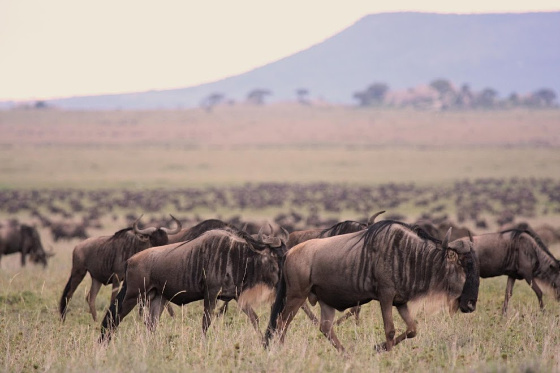How resilient is the Serengeti wildebeest migration to increasing anthropogenic pressures?

(Photo Credit: Thomas Morrison)
Keywords: Movement ecology, mathematical modelling, data science, Serengeti National Park, animal migration, conservation
Project Summary: Throughout the natural world, animal migrations are increasingly under threat due to habitat loss and changing environments. Often when a migration collapses it is rapid, irreversible, and difficult to predict. The aim of this project is to develop methods that will transform the way we study migratory populations and provide the vital scientific information required for their conservation.
The project will focus on the wildebeest migration in the Serengeti National Park, Tanzania, the world’s largest and most iconic terrestrial migration. The successful candidate will develop interdisciplinary skills between mathematics and ecology that will combine modern data collection methods (including GPS collars, accelerometers, and drones for video collection) with artificial intelligence techniques for automated analysis of video data, and machine learning tools for trajectory analysis. A core goal of the project is to link cutting-edge quantitative techniques with applied policy and conservation efforts so that informed management practices can be put in place before critical thresholds are reached.
Project Team: The student will be based jointly in the School of Mathematics and Statistics (supervisor Dr. Colin Torney) and the Institute of Biodiversity, Animal Health & Comparative Medicine (supervisor Dr. Grant Hopcraft). The student will be expected to undertake fieldwork in the Serengeti National Park, where they will work closely with the Serengeti Biodiversity Program, a monitoring program that is led by Dr. Hopcraft. The project student will be further supported by an external supervisor, Dr. Jared Stabach of the Smithsonian Conservation Biology Institute, Front Royal, Virginia.

